Fantasia 2020, Part XIX: The Wapikoni Showcase
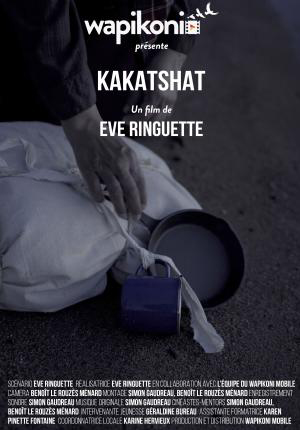 Wapikoni Mobile is a non-profit organisation based in Montreal that sends mobile film studios to work with the youth of Indigenous communities, teaching them the skills to make movies and giving them the support to produce short films. Almost 200 Wapikoni shorts have won awards or special mentions in film festivals around the world, and many have appeared in previous editions of Fantasia. With the studios on hiatus due to the pandemic, this year the festival screened a collection of 17 movies selected by Wapikoni in a showcase of work created through the program.
Wapikoni Mobile is a non-profit organisation based in Montreal that sends mobile film studios to work with the youth of Indigenous communities, teaching them the skills to make movies and giving them the support to produce short films. Almost 200 Wapikoni shorts have won awards or special mentions in film festivals around the world, and many have appeared in previous editions of Fantasia. With the studios on hiatus due to the pandemic, this year the festival screened a collection of 17 movies selected by Wapikoni in a showcase of work created through the program.
I watched the showcase, and was impressed. Every movie had something to recommend it, and most of them had quite a lot. (Unfortunately, I’ve been unable to find acting credits for most of the films; but as least I’ve been able to include links to some.)
The first of the films was one of the best, and possibly the most haunting film I saw at the festival all year. The 8-minute “Kakatshat,” by Eve Ringuette, starts in the 19th century with a curse from an abandoned old woman (played, I believe, by Thérèse Vollant), then moves forward to show the curse’s working-out. It’s stunningly well-shot, and, quiet and eerie, captures a profound atmosphere.
Next came “The Guest,” by Nicholas Rodgers. It’s a folkloric five-minute-long story about a man (Philippe Mathon) who takes a small omnivorous furry creature into his house only to find it has more of an appetite than he realised. It’s made in a distinctive kind of stop-motion that gives it a surreal touch; you can see it here. The next movie was also from Rogers, “RUN,” in which a man who’s committed a violent crime treks into a nighttime forest and finds there more than he expected. It’s a solid piece of horror that does some very nice work with soundscapes, and it’s available here.
Next came “Among The Forest,” by Oqim Nicholas. A youth journeys into the woods, pondering a horrible life left behind, and his internal monologue builds to a powerful ending. The writing gives us some particularly nice character work. “TRANSMISSION 01: 34-OD” by Jim Matlock is an experimental video that uses distorted sound and images to fashion a plea for change in the world, creating nice collage effects along the way.
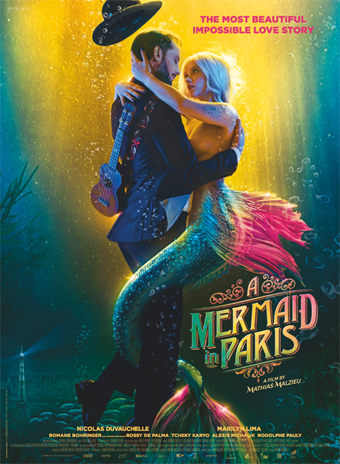 Back in my 2014, my first year covering the Fantasia Festival for Black Gate, I reviewed an animated movie called
Back in my 2014, my first year covering the Fantasia Festival for Black Gate, I reviewed an animated movie called 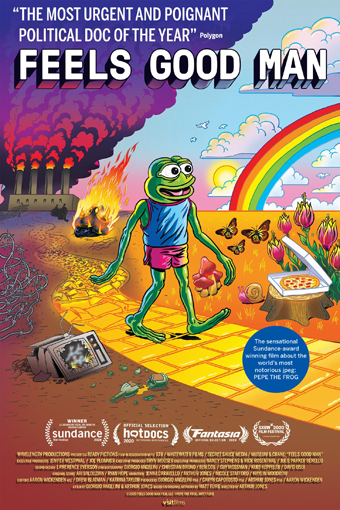 I try to keep an eye on comics, but like many people my first exposure to Pepe the Frog was as a poorly-drawn meme spouting racism. I remember reading about Pepe’s comics origin, but the name of Matt Furie, the cartoonist who created him, remained a piece of trivia. As did his comic Boy’s Club, where the frog first appeared. Now there’s a documentary telling the whole story of Furie, Pepe, and Boy’s Club — a tale of politics, appropriation, and how art can be used in ways the artist could not imagine, for worse and for better.
I try to keep an eye on comics, but like many people my first exposure to Pepe the Frog was as a poorly-drawn meme spouting racism. I remember reading about Pepe’s comics origin, but the name of Matt Furie, the cartoonist who created him, remained a piece of trivia. As did his comic Boy’s Club, where the frog first appeared. Now there’s a documentary telling the whole story of Furie, Pepe, and Boy’s Club — a tale of politics, appropriation, and how art can be used in ways the artist could not imagine, for worse and for better. 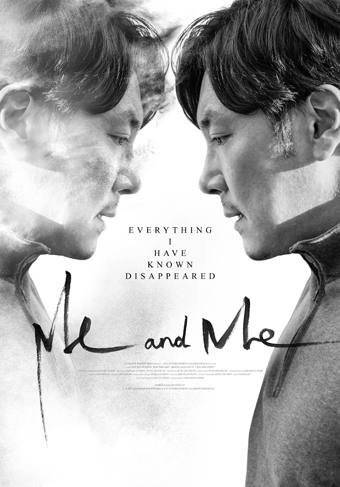 One of the genuinely wonderful things about covering a film festival is occasionally getting to be among the first audiences for a movie trying something new. That is, being an early viewer of a movie that does things unlike other movies, and getting to make one’s own mind up on whether those things work. Movies at a festival have often not had a critical consensus formed around them, and have not yet been defined by other writers or had their influences mapped out. You as the viewer are alone with the thing, almost contextless, in a way that’s rare these days.
One of the genuinely wonderful things about covering a film festival is occasionally getting to be among the first audiences for a movie trying something new. That is, being an early viewer of a movie that does things unlike other movies, and getting to make one’s own mind up on whether those things work. Movies at a festival have often not had a critical consensus formed around them, and have not yet been defined by other writers or had their influences mapped out. You as the viewer are alone with the thing, almost contextless, in a way that’s rare these days.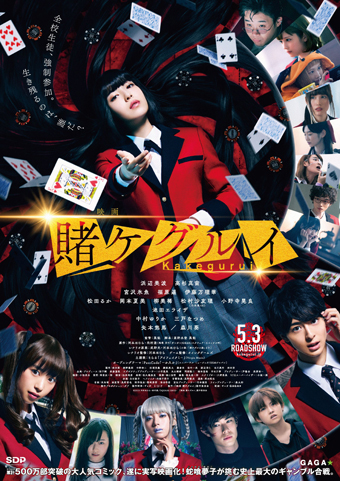 Consider if you will the high school story. By which I mean a story set at a high school, usually involving some members of the student body. It’s relatively unusual for these kinds of stories to be about actual academic achievement, or to put more than maybe one or two members of the faculty in the foreground. It happens, of course. But usually high school stories are about the students, and their lives and interactions, with classes and teachers and adults as external factors that can be used to shape the story but are ultimately incidental to it.
Consider if you will the high school story. By which I mean a story set at a high school, usually involving some members of the student body. It’s relatively unusual for these kinds of stories to be about actual academic achievement, or to put more than maybe one or two members of the faculty in the foreground. It happens, of course. But usually high school stories are about the students, and their lives and interactions, with classes and teachers and adults as external factors that can be used to shape the story but are ultimately incidental to it.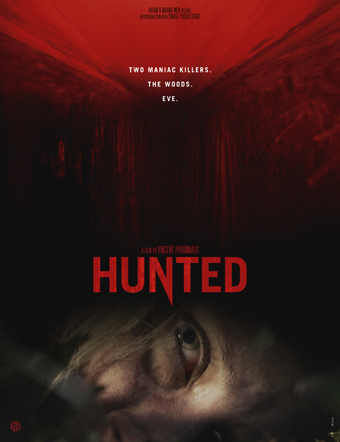 Watching a film festival at home instead of in theatres raises a question that’s become a much-debated point over the last couple of years: is the experience of viewing a movie on a TV screen essentially different and essentially lesser than watching the same movie in a theatre? I don’t think there’s a single answer to this question. Different movies and different viewers and different circumstances will create better or worse scenarios. I think it is probably safe to say that the theatrical experience has much more sensory power; that the powerful sound system and the controlled environment and the full dark of a theatre will usually be more immediately overwhelming to a viewer. But it’s reasonable to wonder if a movie that relies on sheer sensory power can be called ‘a good movie.’
Watching a film festival at home instead of in theatres raises a question that’s become a much-debated point over the last couple of years: is the experience of viewing a movie on a TV screen essentially different and essentially lesser than watching the same movie in a theatre? I don’t think there’s a single answer to this question. Different movies and different viewers and different circumstances will create better or worse scenarios. I think it is probably safe to say that the theatrical experience has much more sensory power; that the powerful sound system and the controlled environment and the full dark of a theatre will usually be more immediately overwhelming to a viewer. But it’s reasonable to wonder if a movie that relies on sheer sensory power can be called ‘a good movie.’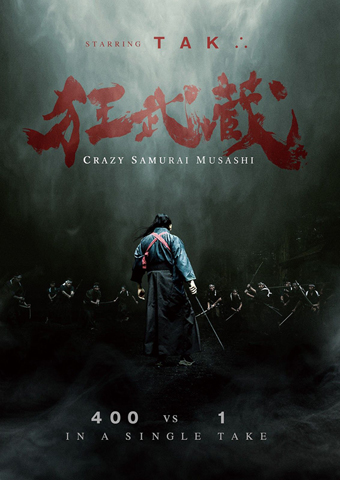 Miyamoto Musashi (1584-1645) was one of the greatest samurai and greatest swordfighters ever to live. By his own account, he fought over sixty duels and won all of them. Stories about Musashi have been told and retold over the centuries, notably including the great novel Musashi (1935-39) by Eiji Yoshikawa. Films about him have proliferated, the most famous likely being Hirohi Inagaki’s Samurai trilogy (1954-55) starring Toshiro Mifune as Musashi.
Miyamoto Musashi (1584-1645) was one of the greatest samurai and greatest swordfighters ever to live. By his own account, he fought over sixty duels and won all of them. Stories about Musashi have been told and retold over the centuries, notably including the great novel Musashi (1935-39) by Eiji Yoshikawa. Films about him have proliferated, the most famous likely being Hirohi Inagaki’s Samurai trilogy (1954-55) starring Toshiro Mifune as Musashi.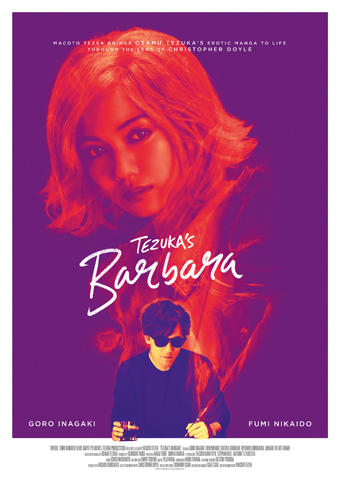 The chain of inspiration behind a work of art can be stunning to behold. Ernst Theodor Amadeus Hoffman was a musician, critic, and fiction writer in the early nineteenth century whose surreal and gemlike short stories are wonders of early fantasy. Some of those stories were worked into the libretto of Jacques Offenbach’s 1881 opera Les contes d’Hoffmann. Adapted to films at least three times, most notably by Michael Powell and Emeric Pressburger in 1951, Offenbach’s work would inspire the great manga creator Osamu Tezuka in 1973. A
The chain of inspiration behind a work of art can be stunning to behold. Ernst Theodor Amadeus Hoffman was a musician, critic, and fiction writer in the early nineteenth century whose surreal and gemlike short stories are wonders of early fantasy. Some of those stories were worked into the libretto of Jacques Offenbach’s 1881 opera Les contes d’Hoffmann. Adapted to films at least three times, most notably by Michael Powell and Emeric Pressburger in 1951, Offenbach’s work would inspire the great manga creator Osamu Tezuka in 1973. A 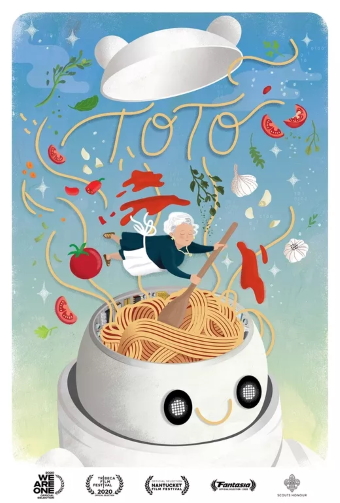 Day 6 of Fantasia 2020 started for me with a panel on folk horror. While you can find the
Day 6 of Fantasia 2020 started for me with a panel on folk horror. While you can find the 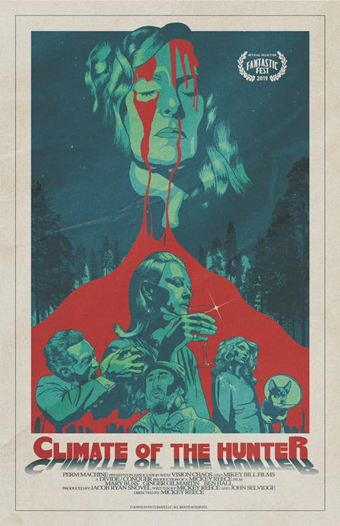 Mickey Reece is a musician turned underground filmmaker with over two dozen features to his credit. In 2019 he came out with Climate of the Hunter, which he directed and wrote with John Selvidge. It streamed on-demand at this year’s Fantasia Festival, and it’s billed as a cross between old-fashioned movie melodramas in the style of Douglas Sirk — what is sometimes called a “
Mickey Reece is a musician turned underground filmmaker with over two dozen features to his credit. In 2019 he came out with Climate of the Hunter, which he directed and wrote with John Selvidge. It streamed on-demand at this year’s Fantasia Festival, and it’s billed as a cross between old-fashioned movie melodramas in the style of Douglas Sirk — what is sometimes called a “